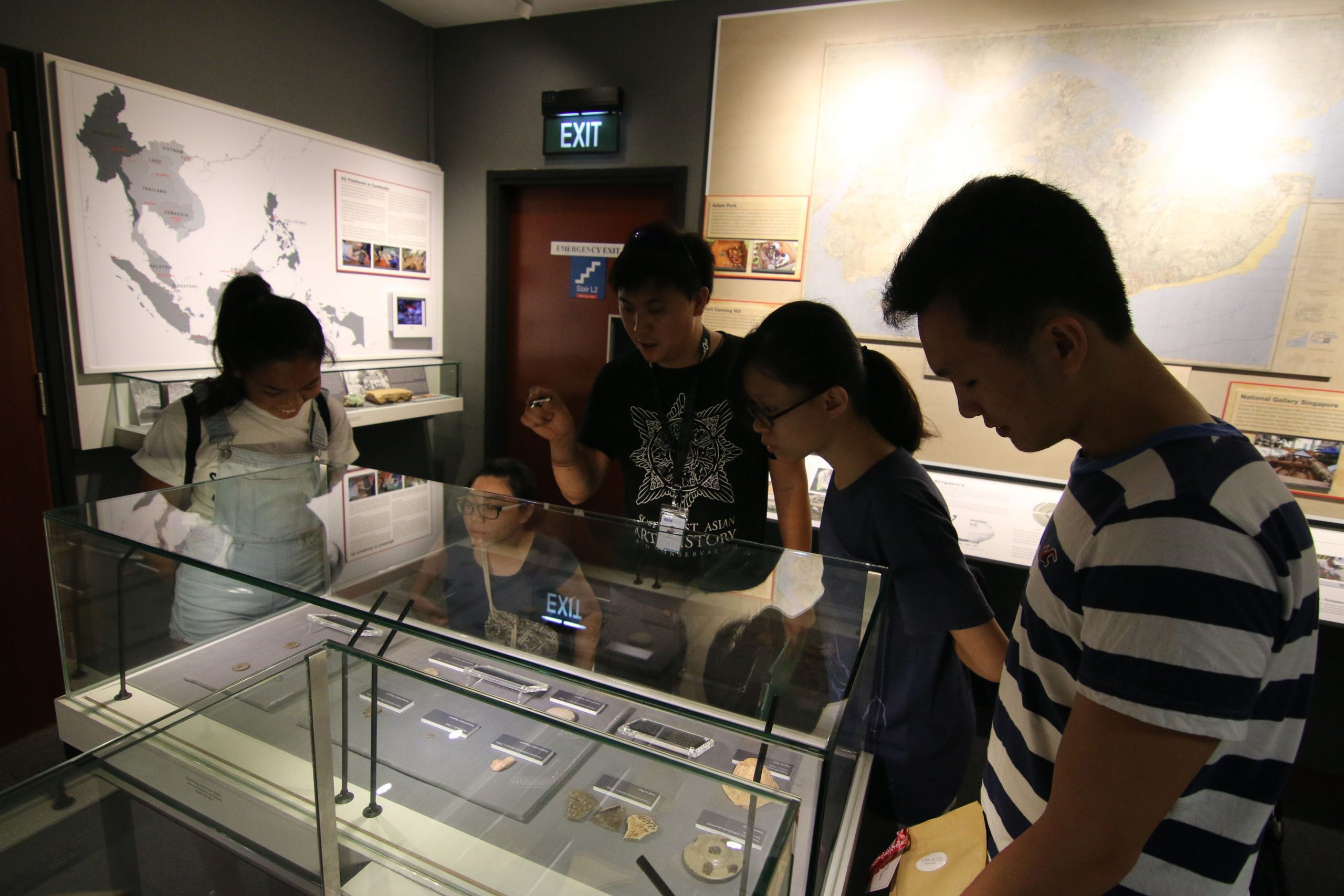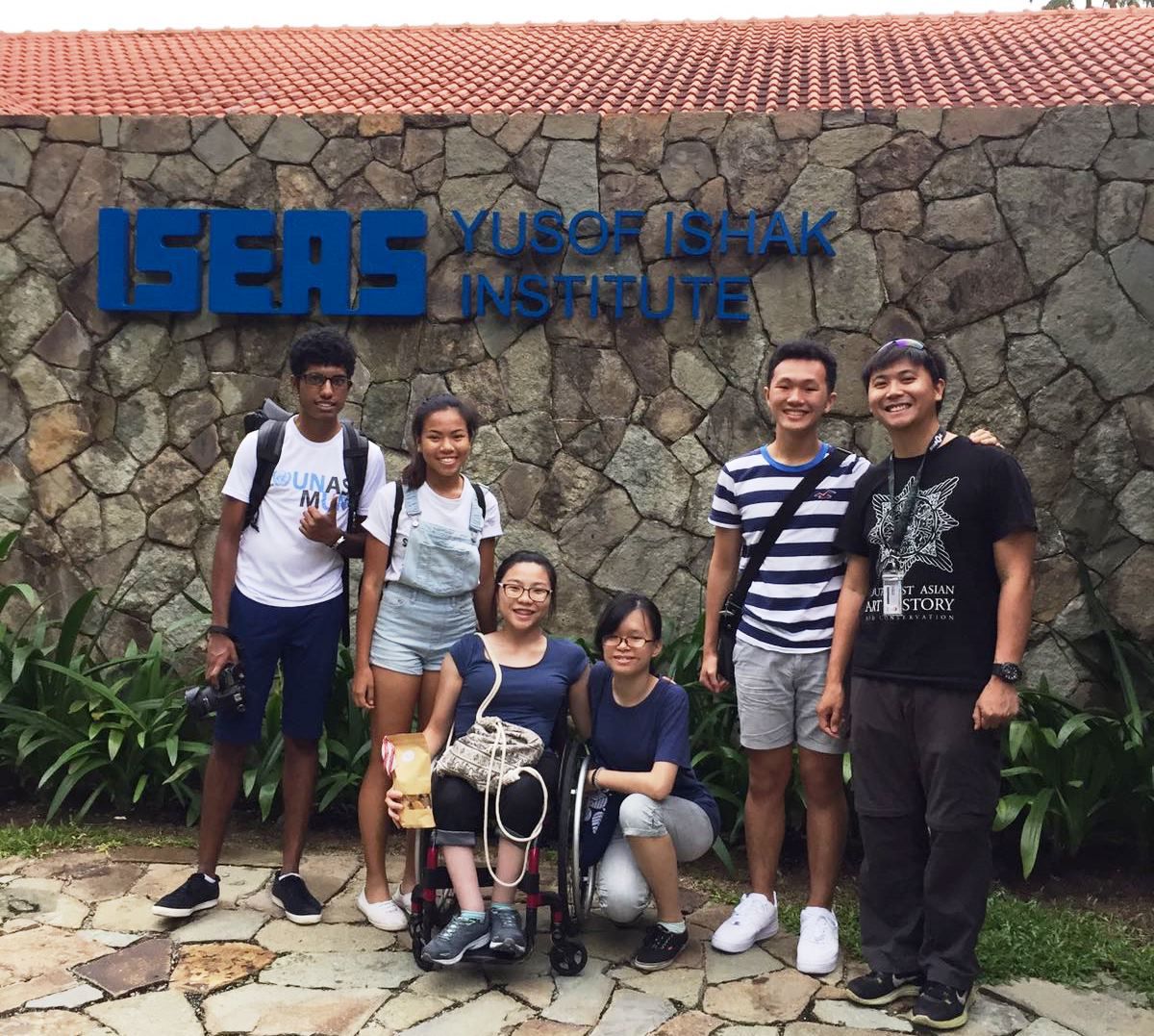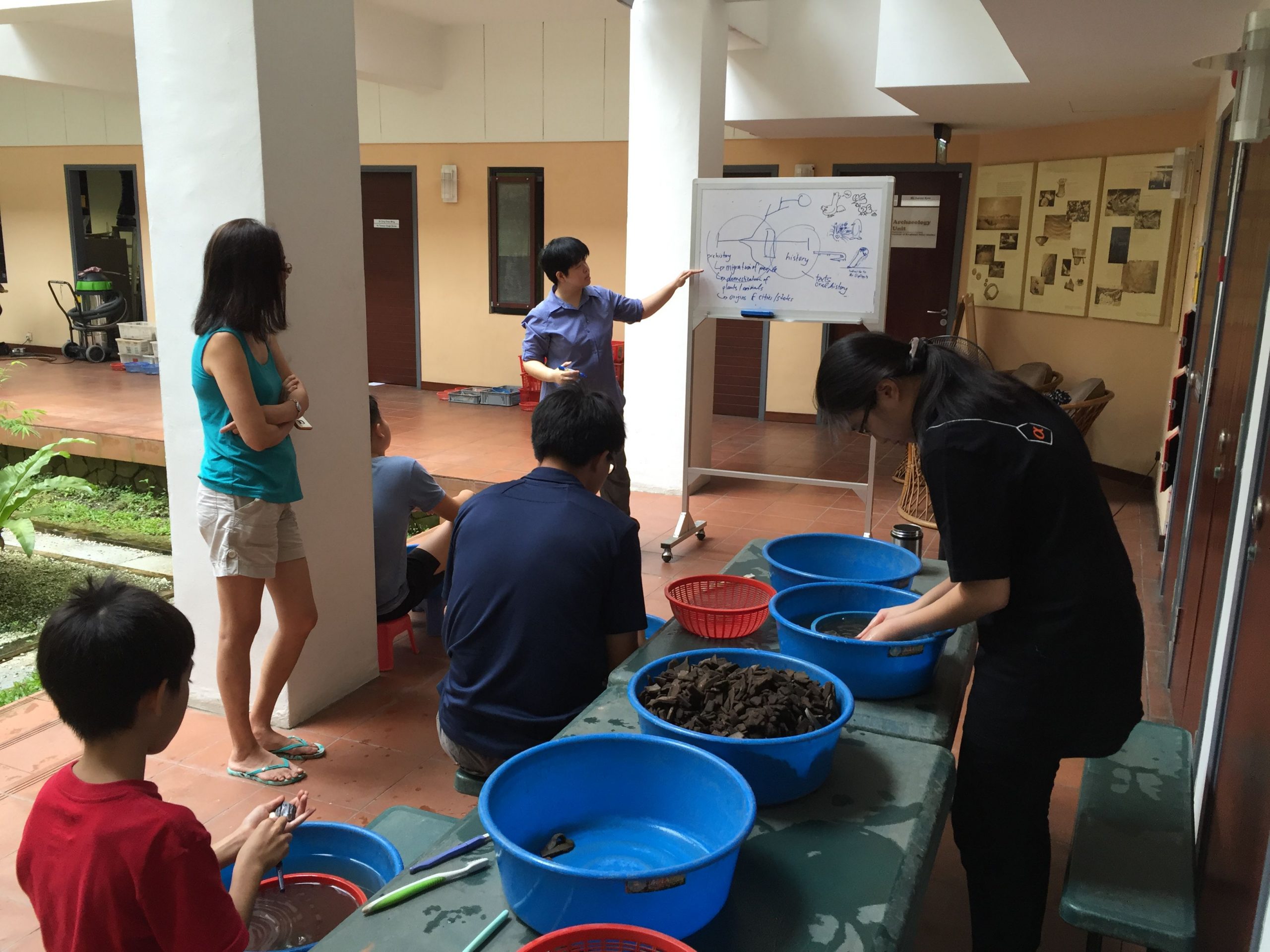
- ASEAN’s response to the North Korean Missile Tests
- Challenges to Protecting Migrant Workers in Southeast Asia
- Timor-Leste: In or Out?
- Outlook At 50: Disruption and the New Economy
- Marawi and the ISIS Threat in Southeast Asia
- Know Your ASEAN: ASEAN Centre for Biodiversity

Dr Tana Li is Visiting Senior Fellow at NSC. She is currently a senior fellow at the College of Asia and Pacific Studies, the Australian National University. She is interested in maritime and environmental histories of Vietnam and southern China, from the 2nd BCE to the late 19th centuries. Her works includes The Nguyen Cochinchina (SEAP, Cornell 1998); Water Frontier: Commerce and the Chinese in the Lower Mekong Region, 1750-1880 (co-ed with Cooke, 2004), Gulf of Tongking Through History (Co-ed. with Cooke and Anderson, 2011), and Anthony Reid and the Study of the Southeast Asian Past (Co-ed with Geoff Wade, ISEAS, 2012). Since 2010, Li Tana has developed interests in environmental history of Vietnam and has been a CI of two Australia Research Council Linkage Grants, on “Southeast Asia’s global economy, climate and the impact of natural hazards from the 10th to 21st centuries” (2010-2013), and “Hazards, Tipping Points, Adaptation and Collapse in the Indo-Pacific World” (2015-2019). Both projects are led by James Warren of Murdoch University. In ISEAS, Dr Li will be working on a manuscript about the maritime history of Vietnam. She will also devote time in leading an international collaborative project, “The Making of the Red River”, which is financially supported by the Chiang Chingkuo Foundation, Taiwan. This study of the ecological history of the Greater Red River region is carried out by a team of historians, geologists, and GIS experts based in Austria, France, Vietnam, and Taiwan.
Email: tana_li@iseas.edu.sg
Tel.: 68704559

- Analysis on the 30th ASEAN Summit
- Conversations on US Engagement in Southeast Asia
- US-China Trade War
- Survey Results: “How do Southeast Asians View the Trump Administration?”
- Outlook at 50: Urbanisation in ASEAN
- RCEP is the Only Game in Town
- Know Your ASEAN – AHA Centre

- Southeast Asia’s Leading Diplomatic Voices Debate ASEAN Consensus
- ESM Goh Chok Tong on the ASEAN Economic Community and Future of ASEAN
- Australian Foreign Minister Julie Bishop on ASEAN-Australia Ties
- The Implications and Costs of Climate Change for ASEAN
- Is the Singapore-Kunming Rail Link on Track?
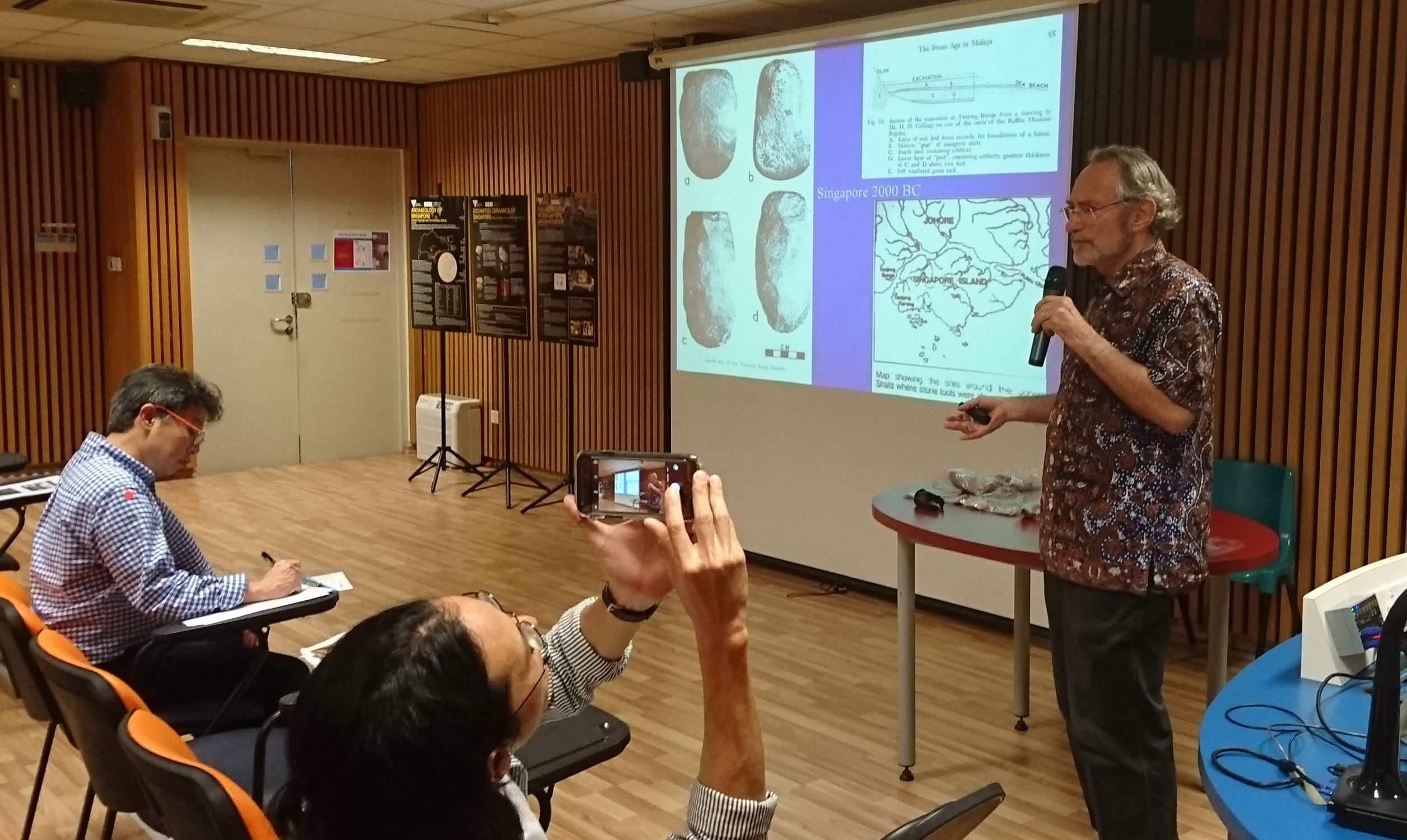
Discussions ranged from ghost stories, rare finds, myth-busting, validating obscure historical references with facts gleaned from new archaeological discoveries, and the large amount of artefacts recovered from Singaporean sites dating to the 14th century. Singaporean archaeologists are now analysing thousands of artefacts. This will offer a significantly enriched understanding of life patterns on the island and global connectedness for over 700 years.
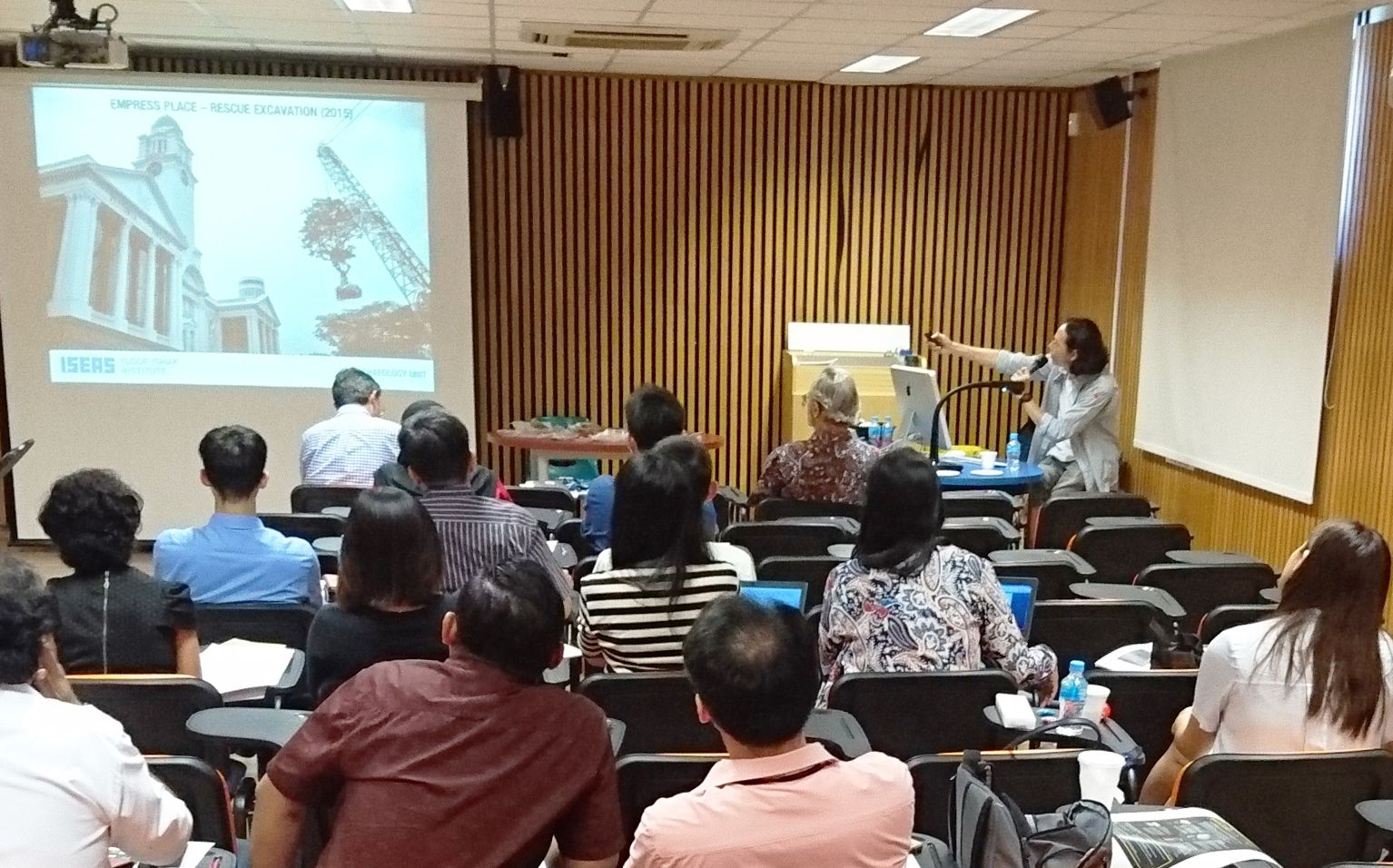
One point that was stressed during the workshop was that archaeology was not a field which proved or disproved history. Rather, the discipline is considered a historical science that focuses on the material remains and long-term impact of past societies. In short, archaeology provides a material perspective to complement history.
Who are we?
We are the Archaeology Unit (AU) at the Nalanda-Sriwijaya Centre (NSC), ISEAS – Yusof-Ishak Institute. The AU is Singapore’s sole national level agency with a dedicated professional archaeology team. ISEAS – Yusof Ishak Institute is a statutory board under the Ministry of Education. The AU is responsible for excavations in Singapore and runs several outreach programmes for schools and government agencies.
One of AU’s missions is to generate awareness and interest on archaeology as a field of study through our Archaeology Programme for Students (APS). APS aims to expose students and teachers to archaeology and show how it contributes to the understanding of Singapore’s past culture and society.
What do we do?
Archaeology is the study of human activity through the recovery and analysis of material culture. Archaeology, like any social science, requires researchers to collect data. To do so the archaeologist would need to conduct fieldwork to meticulously excavate, record and collect artefacts. Once the excavation is completed, the artefacts are transferred to the archaeological laboratory to undergo processing. This process consists of the cleaning, sorting, and cataloguing of the finds. It is only through this process that knowledge and discussion can be generated.
The Archaeology Programme for Students is now part of Temasek History Research Centre. Please click here for more information.
Beyond research and publications, the Nalanda-Sriwijaya Centre (NSC) is committed to public outreach activities. Such activities promote the importance of Southeast Asia’s premodern history, as well as the pivotal role played by archaeology and history in recovering such histories. For this purpose, the centre and the Archaeology Unit (AU) have been active in organising Field Schools, student programmes, workshops and conferences, and publishing NSC Highlights, among others.
Partnering various agencies, a few examples of NSC’s public outreach include:
- The NSC Field School
- The Archaeology Programme for Students (APS)
- Archaeology Workshop for Teachers from the Ministry of Education
- Humanities and Social Sciences Research Programme (HSSRP)
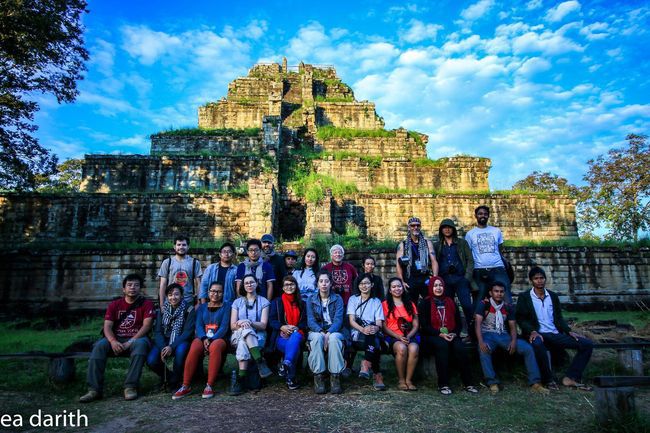
The 2016 Archaeological Field School at Prasat Thom, Koh Ker, Preah Vihear province, Cambodia.
(Credit: Dr. Ea Darith)
There were a total of 16 students who participated in the Field School from a variety of East Asian Summit countries including Australia; Cambodia; China; India; ; Indonesia; Malaysia; New Zealand; the Philippines; Singapore; Thailand; and Vietnam.
The itinerary featured interactive site visits and informal on-site lectures. Hands-on training sessions took participants and staff through 2000 years of complex socio-political and economic evolution. Topics also included urbanisation, exchange dynamics, cultural influence, and multi-directional agency among pan-Asian networks. The pivotal points of analytical foci and departure spanned the famed Khmer polities of Funan (1st-6th centuries CE), Chenla (7th-8th centuries CE), and Angkor (9th-14th centuries CE).
The main event included the coordinated archaeological and anthropological operations at multiple sites within the enigmatic 10th century Angkorian capital city of Koh Ker associated with the reign of Jayavarman IV. The field school was designed to complement ongoing efforts and build on the results of the 2015 field season. Participants lived on-site (in the forest) working with professional staff and local community members. They trained at several excavation locales to cover a diverse range of approaches, techniques and research questions. The results will provide valuable contributions to science, archaeology and history.
The final Field School leg in Singapore provided an important comparative component, added training opportunities, facilitated library access and allowed participants to finalise and present team projects. The Field School was funded by the Ministry of Foreign Affairs, Singapore. Primary institutions included ISEAS, APSARA Authority, and the National Authority for Preah Vihear. Supporting partners included the Ministry of Culture and Fine Arts, Cambodia; the Royal University of Fine Arts, Cambodia; The Royal Academy of Cambodia; the National Museum of Cambodia; the Hungarian Southeast Asian Research Institute; Ecole Française d’Extreme-Orient; and an extensive list of several other organisations and independent researchers who provided invaluable input, advice, opportunities and support.
2016 Field School Administrative History
2016 Archaeological Field School Announcement E-flyer (PDF, 450kb)
2016 Archaeological Field School Booklet (PDF, 2.42MB)
2016 Archaeological Field School Application Form (.doc, 211kb) (due 22 July 2016 +8GMT)
2016 Archaeological Field School Frequently Asked Questions (PDF, 333kb – updated 29 April 2016)
Image Gallery
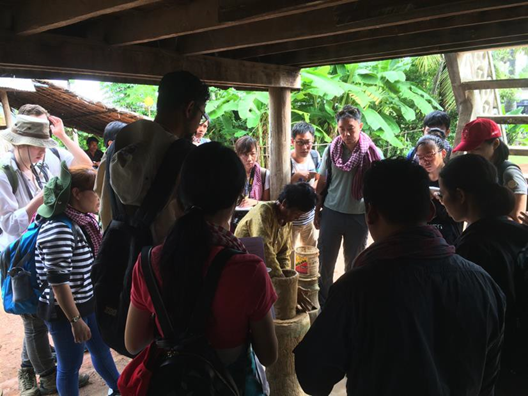
Learning about traditional pottery making at a Kampong Chhnang potting village, led by Mr. Tep Sokha. (Credit: D. Kyle Latinis)
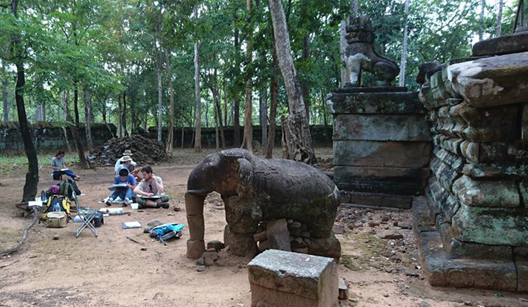
Drawing class at Prasat Damrei led by Aaron Kao (NSC). (Credit: D. Kyle Latinis)
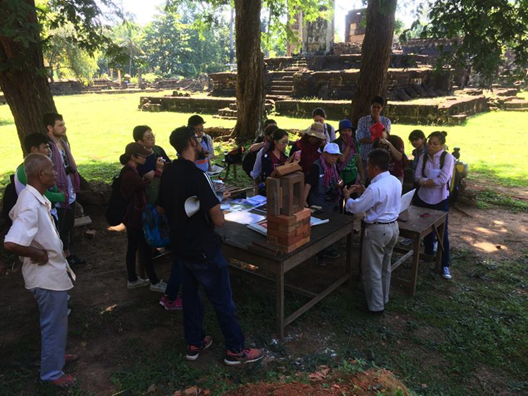
Conservation and restoration workshop with APSARA National Authority at 9th century Bakong Temple – using traditional bricks, mortar, sandstone, and construction technology. (Credit: D. Kyle Latinis)
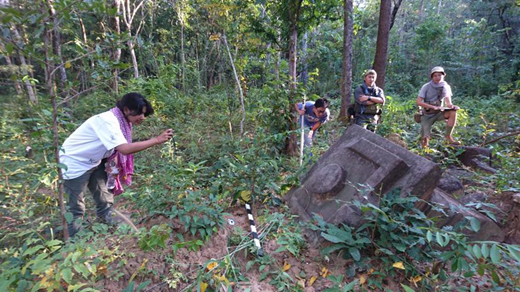
Mapping exercise with Michael Ng and Aaron Kao (NSC) at Prasat Andong Kuk. (Credit: D. Kyle Latinis)
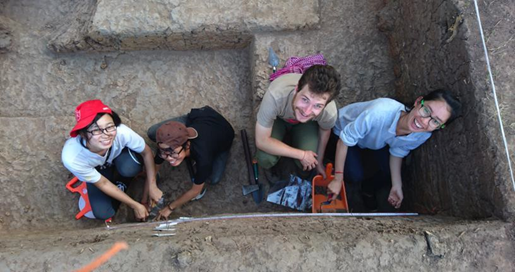
Practicing profile drawings at the KK2 Habitation/Household Site. (Credit: D. Kyle Latinis)
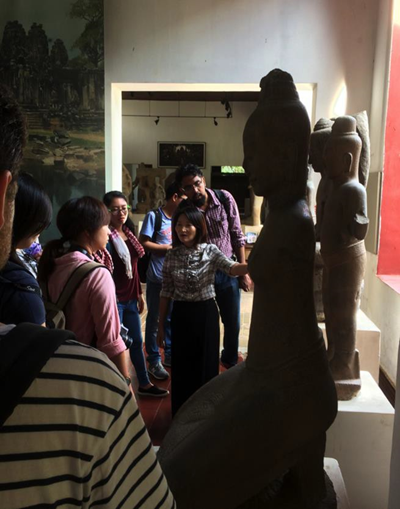
Field school participants had the opportunity to visit and learn from the National Museum of Cambodia staff in Phnom Penh. (Credit: D. Kyle Latinis)
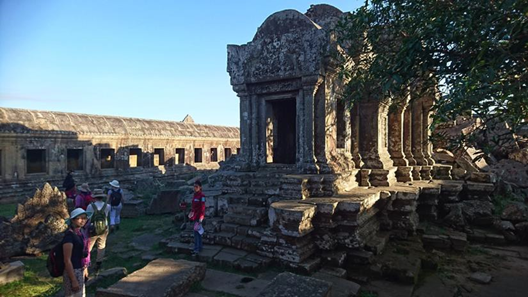
Field school participants visited Preah Vihear temple, guided by Preah Vihear authority staff. (Credit: D. Kyle Latinis)
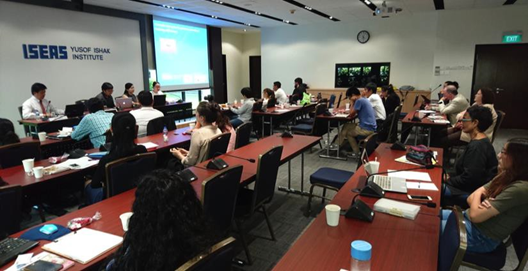
The field school activities culminated in presentations at the ISEAS – Yusof Ishak Institute, Singapore. (Credit: D. Kyle Latinis)

- Priorities of the Philippines’ ASEAN Chairmanship
- The Rise of Populism in Southeast Asia
- RCEP, TPP and the Future of Regional Trade
- Insider Views: Minister K. Shanmugam on Terrorism
- Building an ASEAN Community through the ASEAN University Network
- 2016 in Review




